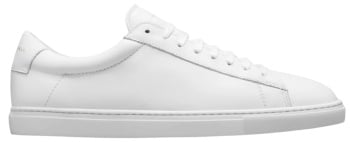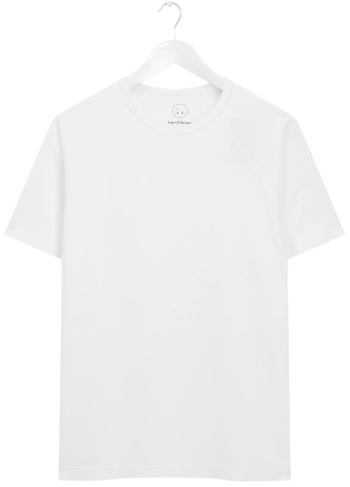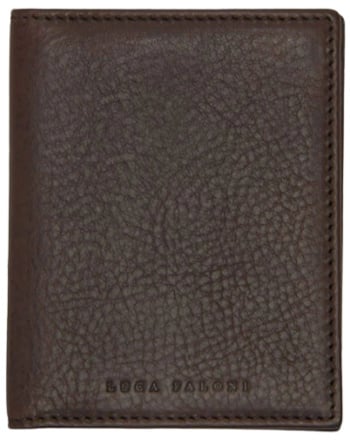We’ve all been there.
Maybe you haven’t hit the gym in a few months. Or maybe it’s one of your first trips to the gym ever.
But you go in, get your pump on, and you feel great.
“I’m going to come in tomorrow and crush it, even harder than today,” you think.
And yeah, you should feel on top of the world, because you’re awesome.
But then muscle soreness sets in. And if you aren’t a regular gym-rat, that initial soreness is tough (if you’re still on day one, just wait for day two—it gets worse).
There’s hope, though. Don’t let muscle soreness slow you down. Once you get past the first week, your body adapts, and you’ll feel less discomfort. If you continue to work out, you’ll always be a little sore, but there are a few ways you can make sure your body is getting everything it needs so you can keep up your journey to becoming your best self.
Over the years, I’ve played a ton of sports, tried several martial arts, and have done weight training. I’ve tried supplements, special diets—you name it.
I’m no fitness expert or nutritionist, but through research, trial, and error, I’ve found these to be the five best ways to recover from a workout.
Of course, before taking supplements or sitting in an ice-tub, seek the advice of a medicine-practitioner. I am not a health expert.
Skip Ahead
Avoid These 3 Muscle Recovery Mistakes
1. Overtraining
More gym time means more muscles, right?
Well, not always.
It’s possible to exercise too much. Now, for most of us, we don’t have to worry. But if you’re thinking about training twice a day, or hitting the heavy weights six or seven days a week, think again.
Many experts recommend going for the heavy weights a maximum of five times a week and giving yourself 48 hours before exercising the same muscle group.
So if you work your chest and arms on Monday, wait until Wednesday before doing another upper body workout. Don’t skip leg day—it gives your show muscles a chance to recoup.
But if you’re driven to go to the gym 7 days a week, dedicate two of those days to active recovery. This can be stretching or walking at a brisk pace on a treadmill.
Building muscle and working out isn’t about being exhausted all the time. Chances are you want to become stronger, healthier, and look great. And you need to give your body rest between workouts so it can do those things.
2. Lack of Hydration
If you’re dehydrated, you’ll notice it in the gym. For starters, you won’t get the most from your workout. Dehydration causes your muscles to lose power and control. You won’t be able to push yourself.
But you still need to keep a steady flow of water after your workout, too.
A lack of water causes more muscle breakdown while also starving your body of the nutrients it needs to build new muscle over what you’ve shredded in the gym.
So all your hard work means very little if you don’t keep yourself hydrated.
3. Lack of Sleep
When you sleep, your body produces glycogen. Want to know what happens if you don’t get enough glycogen?
Let’s look at a critical study done in 2011:
Researchers split people into two groups. Both followed a standardized diet and exercise regimen.
The only difference?
One group was allowed to sleep for 5.5 hours a night, and the other was allowed 8.5 hours.
Now, you likely already know what I’m going to say. Yes, lack of sleep stalled muscle growth. But by how much?
The sleep deprived had 60% less muscle growth than the control, and those who slept at least eight hours had 40% more muscle growth compared to the control group.
The 5 Best Ways to Recover From a Workout
1. Get A Good Night’s Sleep
How It Works:
You know that study I mentioned earlier?
Well, it shows how sleep-deprivation really is a double-whammy that will destroy all that hard work you put in at the gym.
First, running on low sleep doesn’t allow your body to “activate the protein synthesis pathways,” and at the same time, it activates the body’s “degradation pathways.”
In other words, the food you eat doesn’t convert into proteins that build muscles, and your body compensates by tearing away at the muscle you already have.
Not only will you fail to build muscle, but you’ll lose the gains you’ve made.
Why You Need It:
When you get enough sleep, you give your body time to reset its muscle-building hormones, including your natural supply of human growth hormone.
And when you fall into a deep sleep, your body sends more blood to your muscles, allowing for rapid growth and regeneration.
For sleep and muscle growth, the more the better.
The general recommendation is between seven and nine hours. Athletes often aim between eight and ten hours to get some extra rest. You’ll have to decide what works best for your life, but make changes if you’re not able to get at least seven hours a night.
The biggest mindset shift you can make is this: sleep is as important to your muscle growth and workout routine as getting to the gym.
How to Get It Done:
Sleep scientists haven’t just explored the benefits of sleep. They’ve also explored how to get the best sleep possible.
It may seem obvious, but your mattress influences the quality of sleep you get.
So picking a mattress that’s built specifically for athletes and designed to help your body get the most recovery time from your sleep is a huge benefit.
Zoma makes a zoned-construction memory foam mattress that’s firmer around the lumbar for extra back and hip support. In the shoulder and knee region, the foam is softer so you don’t feel the familiar pressure-point pinch from traditional spring mattresses.
The Zoma mattress’s zoned support technology reinforces the lumbar area while maintaining all the cushion you need for your pressure points. While the design is geared toward giving athletes an edge in crucial recovery time, we found it was a great option for those with back pain, too.
2. Roll Out With A Foam Roller
How It Works:
Foam rollers allow for “myofascial release.”
When you workout, in addition to building muscle, your body also produces fascia. This connective tissue is generally a good thing (if you enjoy having your body stay together), but sometimes it can build in areas that limit our mobility or cause pain.
This is especially true if you’re performing a few exercises without ideal form (it can take hours of practice to develop an absolute perfect form for any single exercise).
A foam roller can break that limiting fascia down and help give you more mobility.
Why You Need It:
Foam rolling is a great practice and you should incorporate it into your workouts. Some people like to hit the roller after their workout. Some people like to roll out during their full day of stretching (see our section on active recovery).
No matter how you roll, it’s important to keep consistency.
Without myofascial release, limited mobility can cause your exercise form to get worse, which may eventually lead to an injury. And while you can still get a good workout in when you’re sore (even if it hurts), never try to push through an injury at the gym.
How to Get It Done:
Many people roll directly where they’re experiencing pain, but you’re often better rolling out the areas above and below your pain point. For example, if you’re experiencing knee pain, try rolling out your thigh and hamstring.
For more information on the specific exercises you can do to relieve pain, check out the CriticalBench tutorial for help with neck, back, hip, knee, and general muscle soreness.
I enjoy doing a full 20-30 minute roll along with some stretches as a full day of exercise. I slot it in usually on the weekend after I’ve done weight training all week. It doesn’t feel like a workout, but I’ve noticed it helps a lot with my shoulder and back (which are two of my big problem areas).
If I roll out, I feel more strength and power going into the following week.
3. Add Active Recovery to the End of Your Workout
How It Works:
When you tear muscle down through working out, your body produces lactic acid. This chemical is the #1 reason you feel so sore that you yell when you sit down.
Active recovery is proven to help clear blood lactate from your system.
But what is active recovery?
Well, it takes many forms: swimming, jogging, cycling, and foam rolling, to name a few. Really, any activity you do that raises your heart rate a bit (we’re not talking about a full cardio routine) and puts those sore muscles to work.
So when I say going for a jog counts as active recovery, I don’t mean you need to go for a three-mile run. Even a few leisure laps around the track will help your body recover.
Why You Need It:
For a lot of us guys, it’s hard to get into the habit of thinking a 10-minute jog can be as beneficial for your body as an hour-long weight-lifting session. You won’t get ripped biceps from 10-minute jogs, but there are certain cases where less is more.
Try adding in a cool-down period at the end of your workout—even if it’s only five minutes. After a big upper-body day, try a few light stretches that target your chest and shoulders. And after you hit the squat rack, cool down with a five-minute jaunt on the tread-mill.
Again, the point isn’t to get a cardio workout. It’s encouraging the release of blood lactate so your muscles build and recover faster. That means you can lift more sooner.
How to Get It Done:
Think for a moment about the different options you have in your area for active recovery. Do you have a pool where you can take a dip once a week? Exercise in a gym? There are a ton of cardio machines you can use after your workout.
At the very least, you have a floor. That’s enough to get some light stretching in.
I like to use resistance bands as they can help activate specific muscles that aren’t targeted through jogging and walking.
A quick five-minute stretch plus a day of active recovery will prevent a lot of pain—whether it’s from soreness or injury.
4. Supplement With Magnesium
How It Works:
Magnesium is a critical mineral that aids our body in just about every way, but the one we’re interested in today is its ability to convert glucose to ATP.
I’m sorry, what?
Basically, without magnesium we would get far less energy from our food. Our body wouldn’t be able to transform what we eat into muscle tissue, and we wouldn’t be able to lift anything.
Nearly 68% of Americans don’t get enough Magnesium in their diet.
And active people require more than inactive folks.
So it begs the question: are you getting enough magnesium?
Besides its ability to fight off muscle cramps, regulate blood pressure, helps you sleep better, and wards off depression, it ensures your body is using what you eat and drink to heal the muscles you break down during your workout.
Why You Need It:
Was there something about sleeping better and getting stronger that didn’t appeal to you?
I get it—magnesium isn’t the magic thread that weaves your hopes and dreams together, but if you’re feeling over-sore, weak, or just lacking in energy, my guess is that you’re willing to try something new.
How to Get It Done:
A magnesium supplement like the one made by Nature Made is an excellent way to make sure you’re not one of the ‘under-magnesiumed’ 68%.
But if you’re looking for a more natural alternative, almonds, cashews, spinach, and black beans are excellent sources.
5. Take an Ice Bath
How It Works:
Much like icing a sore joint, the point of cold-water therapy is to reduce inflammation. So an ice bath can help reduce the soreness you feel after intense activity.
A group of studies found some evidence that ice baths help prevent DOMS (delayed-onset muscle soreness, or as I call it—screaming while sitting down).
But a few other studies showed cold therapy also hinders muscle growth, which makes it a no-go if you’re trying to build larger muscles.
Why You Need It:
We put the ice bath on our list for those special situations where you truly push your body to its limit. Like running a marathon or some other intense challenge.
The cold will help you get back into an exercise routine by allowing quicker recovery for your joints, but it doesn’t do much for the muscles.
If you’re in a steady workout routine (not running an ultramarathon or an obstacle course) you’re much better off making small, easy fixes like changing your mattress, eating a handful of almonds, and stretching for five minutes after your workout.
How to Get It Done:
Well, if you’ve finished your workout, then throw some ice in the tub and jump in.
But seriously, you don’t need to make it 35 degrees and go into hypothermic shock. A group of studies found that resting for 10-15 minutes in 55-60 degree water offers the most benefits.
Ready for Recovery?
If you’re just getting back into a workout routine and you’re wondering why the heck you’re so sore, don’t worry. The pain can be wild for a few days, but it’ll heal and won’t be as bad when you hit the same muscle group again next week.
If you’ve decided to focus on your physical health and make exercise a part of your life, it’s important to understand that working out is just a third of the equation. Sleep and diet are the other two factors of a healthy lifestyle.
Just seeing how much a good night’s sleep can make a difference in your recovery is evidence enough.
So if you’re an athlete or you’re leading an active lifestyle, check out Zoma mattresses. The zoned construction is optimal for back and lumbar support without pinching pressure points in the hip, knee, and shoulder.
The Zoma mattress’s zoned support technology reinforces the lumbar area while maintaining all the cushion you need for your pressure points. While the design is geared toward giving athletes an edge in crucial recovery time, we found it was a great option for those with back pain, too.
And for other changes, make sure you’re practicing active recovery after your workout and on off-days. Paired with a healthy diet filled with almonds, spinach, and black beans (or just a magnesium supplement if you’re not the best chef), muscle soreness will never stand in your way again.


















